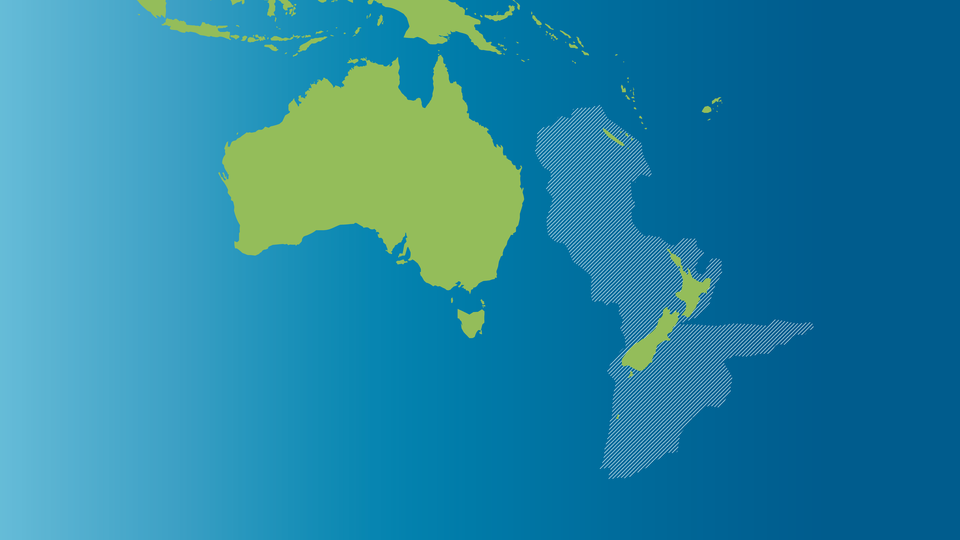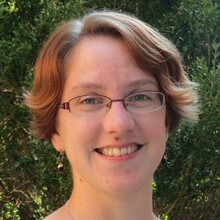· 4 min read
What makes a continent? Husker geologist says ‘Zealandia’ fits

The fictional Atlantis, introduced by the Greek philosopher Plato more than 2000 years ago, has since captured imaginations the world over as a submerged continent of mysterious location and tantalizing secrets.
But a recent study argues for recognizing Zealandia – an actual land mass that looms mostly beneath the South Pacific – as a new continent. And Cara Burberry, a geologist at the University of Nebraska-Lincoln, tends to agree.
“These authors make a very compelling case for this to be considered a continent,” said Burberry, assistant professor of Earth and atmospheric sciences at Nebraska. “I’m inclined to accept their conclusions.”
Though 94 percent of Zealandia rests under the Pacific Ocean – peeking above only in the form of New Zealand and the French territory of New Caledonia – the authors say it represents a distinct section of continental crust whose location and composition distinguish it from Australia. Moreover, they claim that its size – roughly two-thirds the surface area of Australia – and the thickness of its crust make it worthy of continental status.
Burberry said the researchers’ case rests on reclassifying some crustal material that they assert should be considered part of Zealandia – crust that resides near the center of the would-be continent.
Whereas thinner oceanic crust consists of basalt produced by volcanic eruptions, thicker continental crust features a combination of igneous, sedimentary and metamorphic rock. Recent advances in satellite technology and supercomputing, Burberry said, have led geologists to conclude that certain areas of the South Pacific’s seemingly oceanic crust are basalt-free and significantly thicker than previously thought.
Though the authors have conceded that this crust is still thinner than that of other continents, they emphasized that it remains thicker than any known oceanic crust. Rather than featuring ribbons of continental crust interrupted by oceanic, they argue, the area instead contains only the former – even if some sections more closely resemble New York-style crust than Chicago deep-dish.
“This proposal is new in that it’s suggesting that all of these things are part of one much bigger mass,” Burberry said. “I would say that, right now, this is the beginning of a very new discussion about what really makes a continent. Typically, you’d think of a continent as being something that protrudes above the ocean, and that’s clearly not true for most of Zealandia. So I foresee that this isn’t going to be accepted universally right away.
“But I don’t think it’s going to be something that’s refuted. I don’t think the argument’s going to be, ‘No, you’re wrong.’ I think the discussion’s going to be, ‘Given that this is so – that this fits all the criteria for a continent – how do we really define that?’”
And Burberry noted that geographers and geologists already have differing perspectives on continents. Though geographers consider Europe and Asia separate entities, for example, geologists have designated it the single continent of Eurasia.
But the question of how to classify Zealandia could yield others that interest Burberry more. She’s especially puzzled by why a tectonic plate boundary that cuts through Zealandia – the one responsible for thinning its crust – seems to have so little in common with those found elsewhere, such as the famous Mid-Atlantic Ridge that drove apart South America and Africa.
“On that rift – which is our classic (example) – there’s an awful lot of volcanism, which is where you get the real basalt being formed,” she said. “If these rifts don’t have that volcanism, then what made them rift? Why is it not very volcanic? What made it stop? Because the Mid-Atlantic Ridge is still (volcanically) active, and it has been for a very long time. So it’s a fascinating conclusion, because it brings up all these questions.”
Burberry serves on the review panel for a drilling expedition that could soon begin addressing those questions by extracting a sample from Lord Howe Rise, a plateau of continental crust that runs diagonally through the middle of Zealandia. The recent study, she said, has her eagerly anticipating the expedition’s results.
“It raises a lot of exciting questions, and this is how science progresses.”








